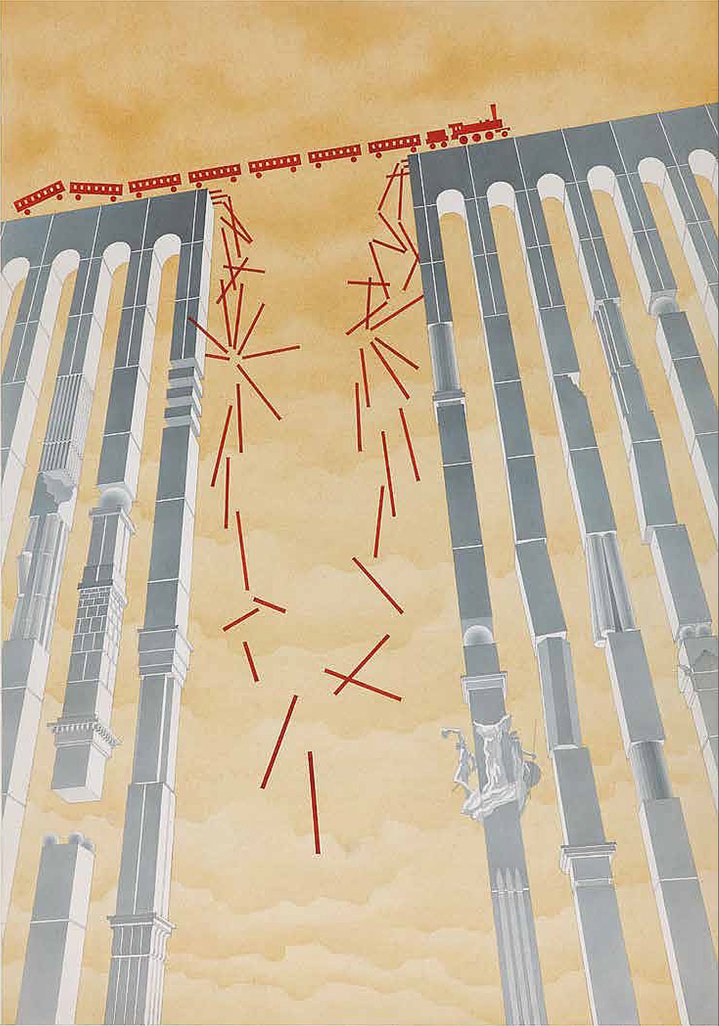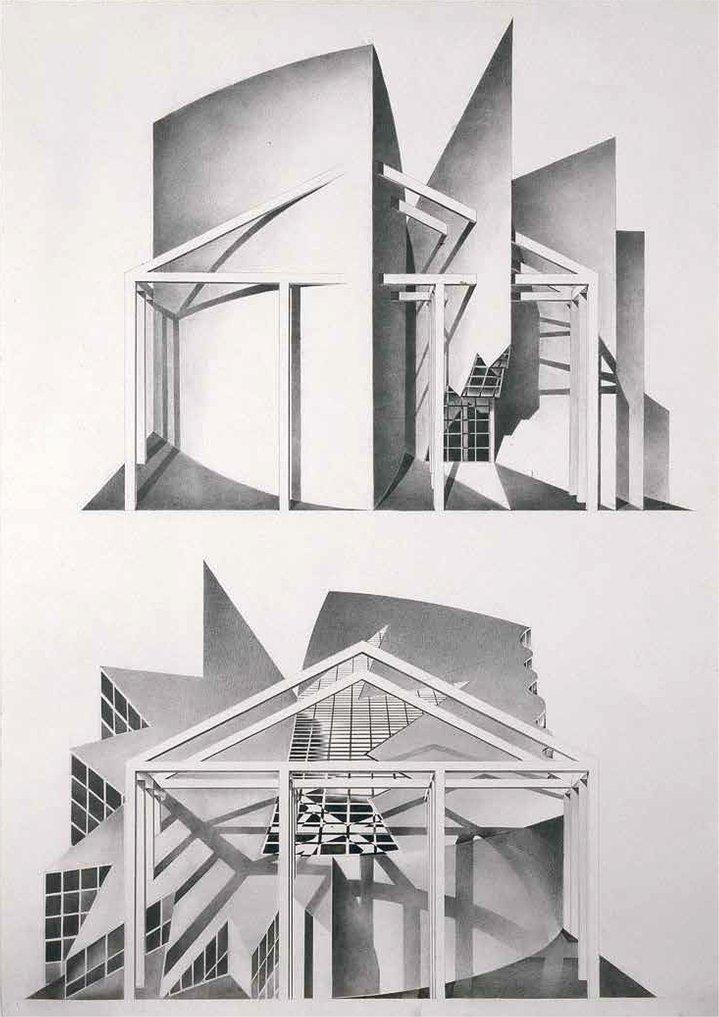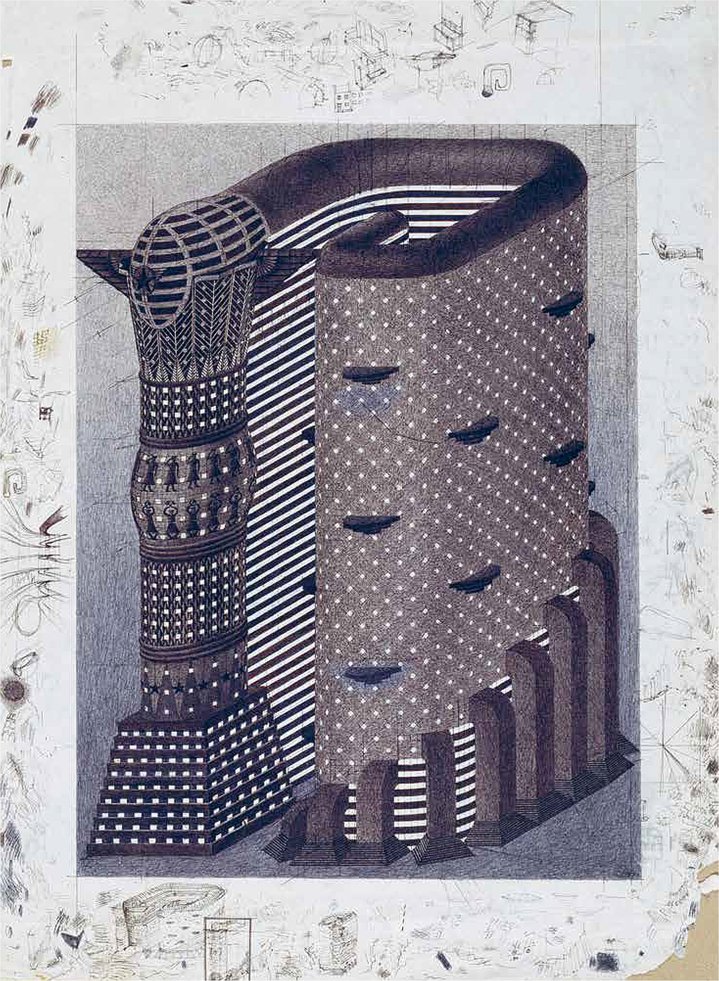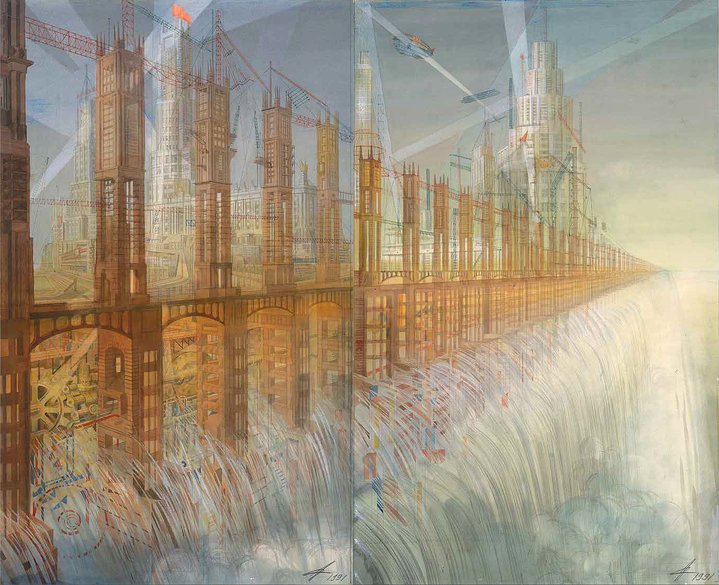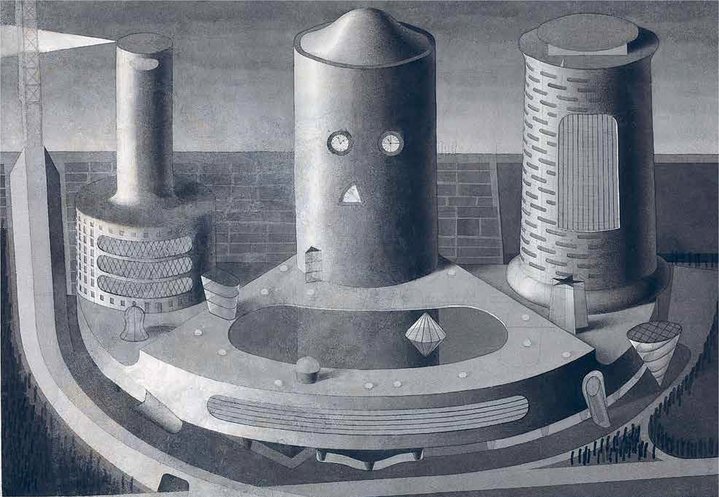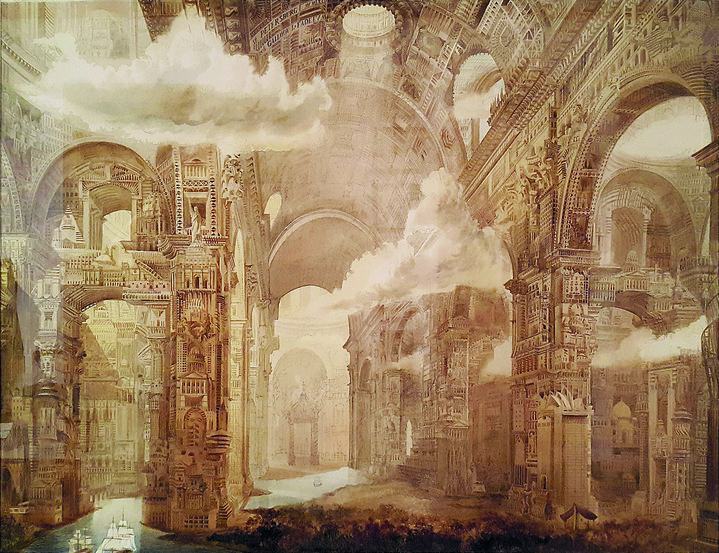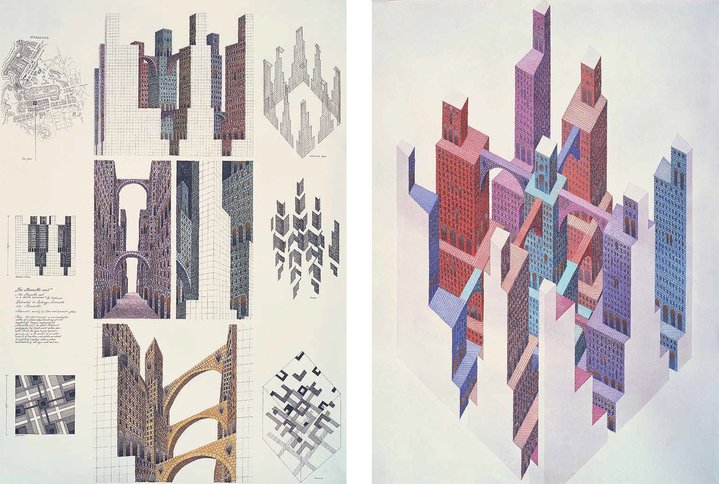Paper Architecture. The late Soviet dream that never aimed to become a reality

None
How a small group of Soviet architects in the pre-computer era invented a fantasy world that could only exist on paper and managed to turn it into an art form.
It was in the summer of 1981 that a small group of young Soviet architects dared to bypass the Soviet Union’s draconian censorship system and managed to submit 10 projects to an international competition of architectural ideas in Japan.
It was a time when there was no hope of creating any original architectural project in the Soviet Union. Half a year later, they found out that one of their ideas, submitted by Mikhail Belov and Maxim Kharitonov, had won first prize. For that group and for many others, at least part of the Iron Curtain had finally come down. What began as a trickle soon turned into a torrent as hundreds of Soviet architects offered their projects to the East with considerable success. All that came to a sudden end in 1988. “Perestroika” had started and the time had come for all those living in the Soviet Union to stop dreaming and start coping with a much tougher reality.
The first Soviet exhibition of these bold new projects took place in the newsroom of a youth journal in Moscow in 1984. The show’s name was in Soviet terms deliberately provocative: “Paper Architecture.” What united the projects was that none of them were meant to be built.
In terms of boldness, the “Paper Architects” had of course been preceded by the Russian Avant-Garde architects of the 1920s, whose holy mission was to build a brave new world.
The main difference was that after the 1917 Russian Revolution, those architects were absolutely convinced that their futuristic projects would be built, whereas the “Paper Architects” of the 1980s had no intention of ever realising their dreams in concrete. If the first were in pursuit of Utopia, their successors’ goal was just to create a fantasy world.
Those creations by Soviet paper architects are the last of their kind, as they were all drawn and painted by hand and were completed just before the computer era ended a tradition of architectural draughtsmanship dating back at least 500 years. Yet it is that dying craft that has secured a long museum shelf life for such an apparently short-lived style as paper architecture.
In 1986, the Soviet paper architects’ work started being shown abroad, with exhibitions in London, Paris, Milan, Frankfurt and Brussels, as well as in four American universities. This was followed by shows in Russia’s main art museums. St. Petersburg’s Russian Museum, as well as the Pompidou Centre in Paris and the Museum of Modern Art in New York have since all acquired substantial collections of these architectural drawings.








